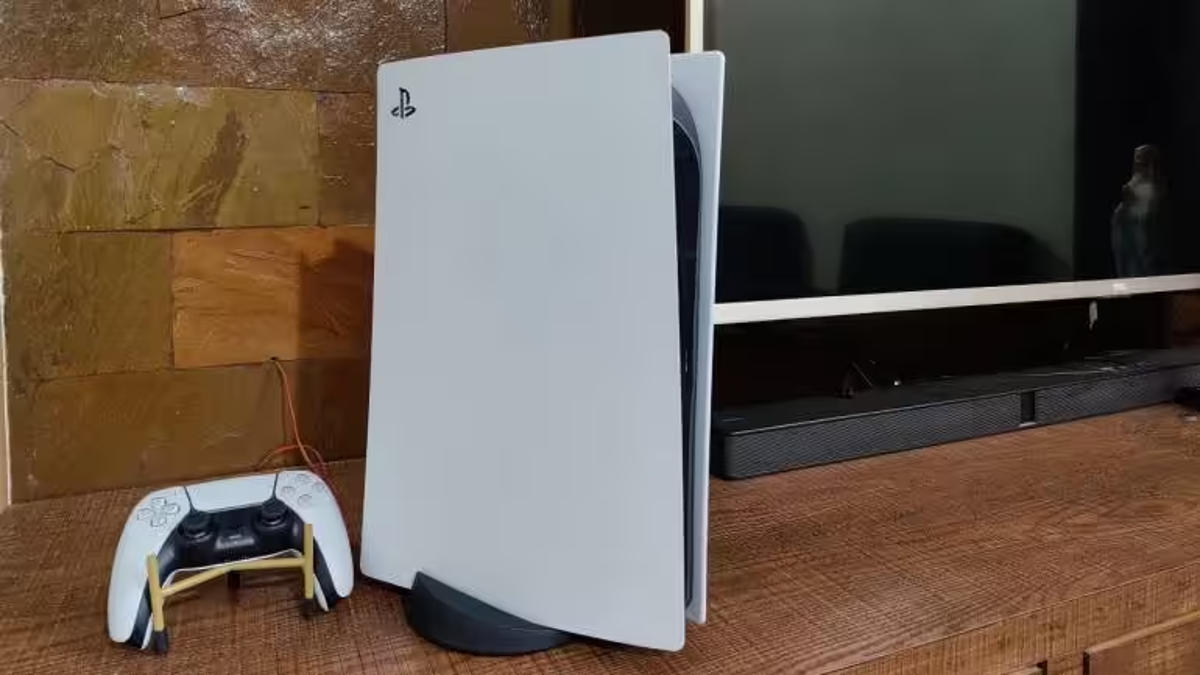Just In
- 8 hrs ago

- 8 hrs ago

- 9 hrs ago

- 10 hrs ago

Don't Miss
- Finance
 Rs 95/Share Dividend: Record Date On 28th June; Buy Mahindra Group Stock To Be Eligible?
Rs 95/Share Dividend: Record Date On 28th June; Buy Mahindra Group Stock To Be Eligible? - Lifestyle
 Kamada Ekadashi 2024 Wishes: Greetings, Messages, Texts, Images, Twitter Status And Instagram Captions
Kamada Ekadashi 2024 Wishes: Greetings, Messages, Texts, Images, Twitter Status And Instagram Captions - Sports
 Who Won Yesterday's IPL Match 33? PBKS vs MI, IPL 2024 on April 17: Mumbai Indians Escape Last-Ditched Fight by Punjab Kings To Win
Who Won Yesterday's IPL Match 33? PBKS vs MI, IPL 2024 on April 17: Mumbai Indians Escape Last-Ditched Fight by Punjab Kings To Win - Movies
 Do Aur Do Pyaar OTT Release Date & Platform: When & Where To Watch Vidya Balan’s Film After Theatrical Run?
Do Aur Do Pyaar OTT Release Date & Platform: When & Where To Watch Vidya Balan’s Film After Theatrical Run? - News
 BRS Chief K Chandrasekhar Rao Slams BJP, Says K Kavitha's Arrest Is Vendetta Politics
BRS Chief K Chandrasekhar Rao Slams BJP, Says K Kavitha's Arrest Is Vendetta Politics - Automobiles
 Aprilia RS 457 Accessories: A Detailed Look At The Prices
Aprilia RS 457 Accessories: A Detailed Look At The Prices - Education
 Karnataka SSLC Result 2024 Soon, Know How to Check Through Website, SMS and Digilocker
Karnataka SSLC Result 2024 Soon, Know How to Check Through Website, SMS and Digilocker - Travel
Telangana's Waterfall: A Serene Escape Into Nature's Marvels
Indian Researchers Use 3D Technology To Restore Tribal Art: Here’s How
Technological advancements over the past few decades have changed how we live our lives. The number of applications of technology in real-life scenarios is numerous. Here is an episode where technology is being used to restore art that is at risk. Based out of Odisha, the Centurion University is preserving tribal art and culture from the state in 3D format.

3D Technology For Preserving Tribal Art
Art restoration in 2D format has already been underway. However, it was often found to miss out on the finer details of the traditional art forms. The answer is 3D technology, say the researchers of the Centurion University's Gram Tarang vocational institute. The institute is also working with farmers to bring out smart agricultural practices in Odisha.
Under the new 3D technology for preserving art, more than 4,000 artifacts belonging to five of the 62 tribes across Odisha have already been preserved in 3D digital format. This method also included audio and visuals. The restored documents are accessible online for scholars and researchers working on tribal art.

The 3D art restoration program team has worked on textile, weaponry, household artifacts, agricultural tools and practices, musical instruments, and also religious idols. The team felt that given another decade or two, the tribal art would be lost forever. Preserving them now was essential.

3D Technology For Preserving Tribal Art With VR
What's more, the team has also integrated 3D technology with VR. The documents can also be accessed via Oculus VR headsets. Abhi Mitra, a game programmer at Gram Tarang Technologies and his research colleagues has worked closely with the tribal communities to preserve their art and culture in its original form using 3D and VR.
The team is also working on AR, VR, UAVs like drones, and artificial intelligence to capture tribal art and culture. By using these technologies, the team is protecting crumbling monuments as well, especially those that are at risk of destruction from natural and man-made calamities.
In another case in Mumbai, an ancient site was first surveyed using terrestrial laser scanning, popularly called LIDAR, to construct a 3D model. Next, the model was used as a baseline to monitor the surface of the building for structural changes. Some of the monuments, art, and culture preserved are available to the public as a VR experience in selected ASI (Archaeological Survey of India) - restored sites.
-
99,999
-
1,29,999
-
69,999
-
41,999
-
64,999
-
99,999
-
29,999
-
63,999
-
39,999
-
1,56,900
-
79,900
-
1,39,900
-
1,29,900
-
65,900
-
1,56,900
-
1,30,990
-
76,990
-
16,499
-
30,700
-
12,999
-
62,425
-
1,15,909
-
93,635
-
75,804
-
9,999
-
11,999
-
3,999
-
2,500
-
3,599
-
8,893












































